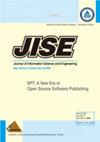Holocaust lessons for the criminal justice classroom
IF 1.1
4区 计算机科学
Q4 COMPUTER SCIENCE, INFORMATION SYSTEMS
引用次数: 0
Abstract
The rise of antisemitic acts across the United States and worldwide and the general lack of Holocaust knowledge highlights the need to better integrate Holocaust education across disciplines, especially criminal justice. An undergraduate criminology class at Queensborough Community College (QCC) at the City University of New York (CUNY) was aligned with the goals and objectives of an on-campus exhibit, Conspiracy of Goodness, at the Kupferberg Holocaust Center. The exhibit focused on the rescuing behaviors of the village of Le Chambon during the Holocaust. Survey information suggested that prior to the class, students only had a rudimentary understanding of the Holocaust. During the semester students engaged with the exhibit, attended associated events and completed a paper comparing and contrasting the behaviors of Le Chambon with those of Jedwabne, Poland. Students selected and critically applied a criminological theory to explain the differences in behavior. Upon completion of the course, the majority of students showed an increased mastery not only of the facts of the Holocaust, but of their ability to think critically and make connections between historical events, criminological theories, and current events evidenced by their final papers, suggesting the benefit of aligning the studies of the Holocaust and criminal justice.刑事司法课堂大屠杀课程
反犹太主义行为在美国和世界各地的兴起,以及对大屠杀知识的普遍缺乏,突出表明需要更好地将大屠杀教育纳入各个学科,特别是刑事司法。纽约市立大学昆斯伯勒社区学院(QCC)的一门犯罪学本科生课程与库普弗伯格大屠杀中心校园展览“善良的阴谋”的目标和目的相一致。展览聚焦于大屠杀期间Le Chambon村的救援行为。调查信息显示,在上课之前,学生们对大屠杀只有初步的了解。在这学期里,学生们参与了展览,参加了相关活动,并完成了一篇论文,将Le Chambon的行为与波兰Jedwabne的行为进行了比较和对比。学生们选择并批判性地应用犯罪学理论来解释行为上的差异。完成课程后,大多数学生不仅对大屠杀的事实有了更深入的了解,而且对他们批判性思维的能力以及将历史事件、犯罪学理论和期末论文所证明的时事联系起来的能力也有了更高的了解,这表明将大屠杀研究与刑事司法相结合是有益的。
本文章由计算机程序翻译,如有差异,请以英文原文为准。
求助全文
约1分钟内获得全文
求助全文
来源期刊

Journal of Information Science and Engineering
工程技术-计算机:信息系统
CiteScore
2.00
自引率
0.00%
发文量
4
审稿时长
8 months
期刊介绍:
The Journal of Information Science and Engineering is dedicated to the dissemination of information on computer science, computer engineering, and computer systems. This journal encourages articles on original research in the areas of computer hardware, software, man-machine interface, theory and applications. tutorial papers in the above-mentioned areas, and state-of-the-art papers on various aspects of computer systems and applications.
 求助内容:
求助内容: 应助结果提醒方式:
应助结果提醒方式:


